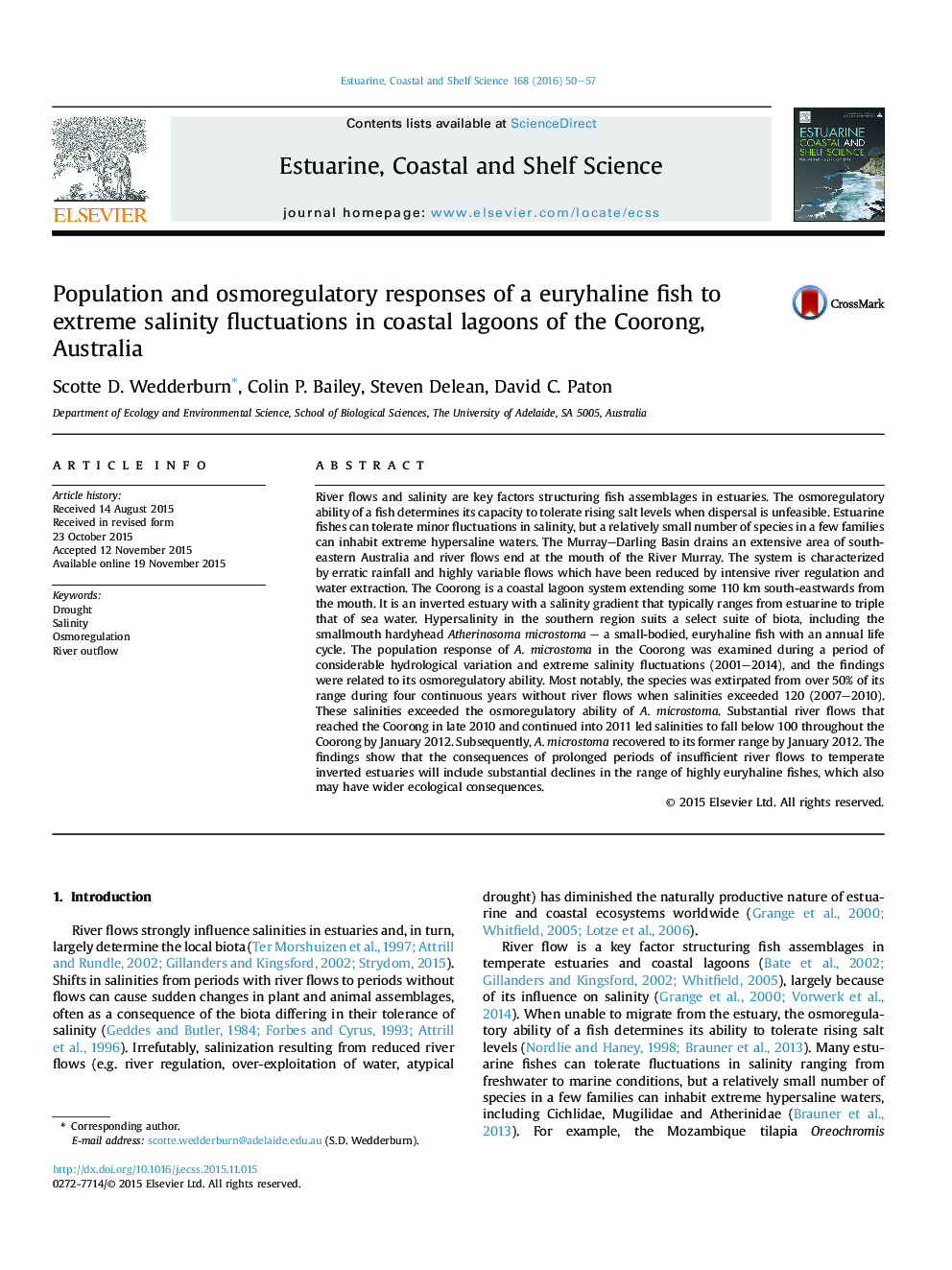| کد مقاله | کد نشریه | سال انتشار | مقاله انگلیسی | نسخه تمام متن |
|---|---|---|---|---|
| 4539326 | 1626631 | 2016 | 8 صفحه PDF | دانلود رایگان |

• River flows to an inverted estuary were diminished during prolonged drought.
• Extreme hypersalinity led to >50% reduction in the range of smallmouth hardyhead.
• Salinity exceeded the osmoregulatory limit of the fish in much of its range.
• Salinity returned to pre-drought levels following the return of river flows.
• The smallmouth hardyhead population recovered to its former range after 2-years.
River flows and salinity are key factors structuring fish assemblages in estuaries. The osmoregulatory ability of a fish determines its capacity to tolerate rising salt levels when dispersal is unfeasible. Estuarine fishes can tolerate minor fluctuations in salinity, but a relatively small number of species in a few families can inhabit extreme hypersaline waters. The Murray–Darling Basin drains an extensive area of south-eastern Australia and river flows end at the mouth of the River Murray. The system is characterized by erratic rainfall and highly variable flows which have been reduced by intensive river regulation and water extraction. The Coorong is a coastal lagoon system extending some 110 km south-eastwards from the mouth. It is an inverted estuary with a salinity gradient that typically ranges from estuarine to triple that of sea water. Hypersalinity in the southern region suits a select suite of biota, including the smallmouth hardyhead Atherinosoma microstoma – a small-bodied, euryhaline fish with an annual life cycle. The population response of A. microstoma in the Coorong was examined during a period of considerable hydrological variation and extreme salinity fluctuations (2001–2014), and the findings were related to its osmoregulatory ability. Most notably, the species was extirpated from over 50% of its range during four continuous years without river flows when salinities exceeded 120 (2007–2010). These salinities exceeded the osmoregulatory ability of A. microstoma. Substantial river flows that reached the Coorong in late 2010 and continued into 2011 led salinities to fall below 100 throughout the Coorong by January 2012. Subsequently, A. microstoma recovered to its former range by January 2012. The findings show that the consequences of prolonged periods of insufficient river flows to temperate inverted estuaries will include substantial declines in the range of highly euryhaline fishes, which also may have wider ecological consequences.
Figure optionsDownload high-quality image (216 K)Download as PowerPoint slide
Journal: Estuarine, Coastal and Shelf Science - Volume 168, 5 January 2016, Pages 50–57